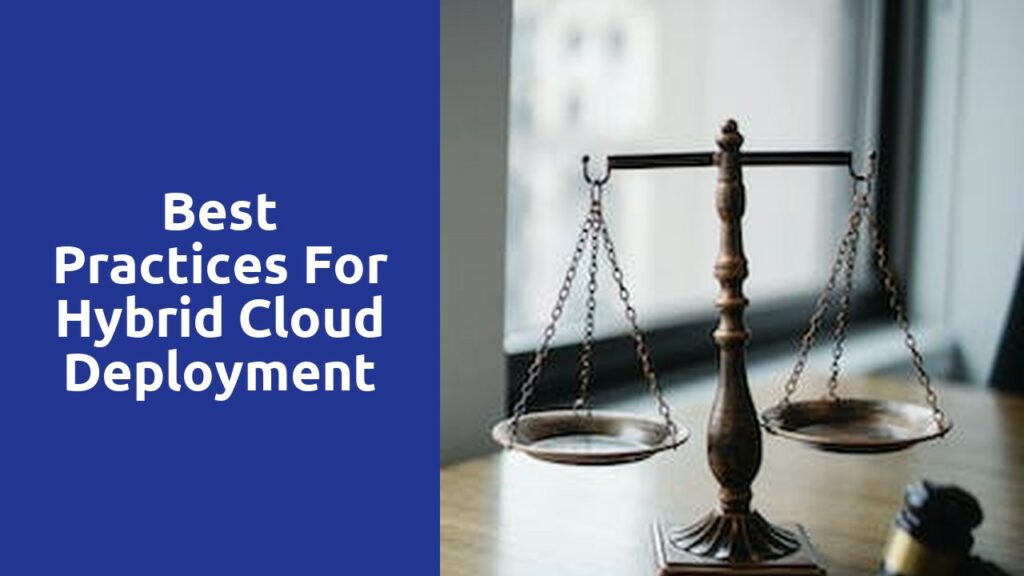Understanding the Hybrid Cloud: Exploring the benefits and challenges of adopting a hybrid cloud model.
The hybrid cloud model has gained significant traction in recent years as organizations aim to strike a balance between the flexibility and cost-effectiveness of public cloud services and the security and control offered by private cloud environments. By combining the two, organizations can take advantage of the best of both worlds. The benefits of adopting a hybrid cloud model are numerous. Firstly, it allows organizations to leverage the scalability and cost efficiency of public cloud providers, particularly for non-sensitive and fluctuating workloads. This flexibility enables companies to eliminate the need for excessive on-premises infrastructure, reducing overall costs and minimizing resource wastage.
When it comes to data security and compliance, a hybrid cloud model offers a level of control and protection that public cloud services alone may not provide. Sensitive data, such as customer information or proprietary business data, can be stored in the private cloud component of the hybrid model to ensure maximum security. This enables organizations to meet regulatory requirements, protect intellectual property, and maintain confidential information within their own controlled environment. Additionally, the hybrid cloud model allows for seamless integration between on-premises infrastructure and public cloud services, enabling organizations to scale their operations and take advantage of new technologies without disrupting existing workflows. However, adopting a hybrid cloud model also comes with its fair share of challenges.
Evaluating Workload Requirements: Determining which workloads are suitable for hybrid cloud deployment and which are not.
When evaluating workload requirements for hybrid cloud deployment, it is essential to carefully consider which workloads are suitable for this architecture and which are not. This evaluation process involves assessing the specific needs and characteristics of each workload to determine its compatibility with a hybrid cloud environment.
First and foremost, workloads that require high levels of security and data protection may not be well-suited for hybrid cloud deployment. In industries such as healthcare or finance, where sensitive and confidential information is involved, stringent security measures are crucial. While hybrid clouds can offer enhanced security features, there may still be concerns about data privacy and compliance regulations. Therefore, it is important to thoroughly evaluate the security requirements of a workload before considering its suitability for hybrid cloud deployment.
Security Considerations: Implementing robust security measures to protect data and applications in a hybrid cloud environment.
Securing data and applications in a hybrid cloud environment poses unique challenges that require robust security measures for protection. The underlying infrastructure of hybrid cloud incorporates both public and private cloud environments, necessitating a comprehensive approach to ensure the confidentiality, integrity, and availability of sensitive information.
Implementing strong access control mechanisms is fundamental to safeguarding data and applications in a hybrid cloud setting. Role-based access control (RBAC) is an effective method that assigns permissions and privileges based on users’ roles and responsibilities, limiting unauthorized access across the hybrid cloud infrastructure. By defining clear and well-defined access policies, organizations can prevent potential attacks and unauthorized activities, mitigating risks to their data and applications. Additionally, implementing multi-factor authentication (MFA) further enhances security by requiring users to provide multiple forms of identification before accessing critical resources, reducing the likelihood of unauthorized access even in the event of stolen credentials.
Choosing the Right Cloud Providers: Selecting reliable and compatible cloud service providers to ensure seamless integration and optimal performance.
When it comes to choosing the right cloud providers, reliability and compatibility are key factors that should not be overlooked. It is essential to select providers that can seamlessly integrate with your existing systems and applications, ensuring a smooth transition to the cloud. Optimal performance is another crucial aspect that cannot be compromised. Your chosen cloud service providers should be able to deliver consistent and high-quality performance to meet your business needs.
To ensure reliability, it is advisable to research and assess the reputation and track record of potential cloud providers. Look for providers that have a proven track record of delivering reliable services and have a solid infrastructure in place. This will give you confidence that your data and applications will be secure and accessible whenever you need them. Additionally, compatibility is vital to ensure that your existing systems and applications can seamlessly integrate with the cloud. Choosing providers that offer compatibility guarantees will save you time and effort in the long run.
Data Governance and Compliance: Establishing policies and procedures to maintain data integrity and comply with industry regulations.
Effective data governance and compliance are essential for organizations in today’s data-driven landscape. By establishing robust policies and procedures, businesses can ensure data integrity and meet industry regulations.
One crucial aspect of data governance is the development of clear data management policies. These policies outline how data is collected, stored, and accessed within an organization. By clearly defining roles and responsibilities, organizations can mitigate the risk of data breaches and unauthorized access. Additionally, these policies should address data classification and data retention, ensuring that data is properly classified based on its sensitivity level and that it is stored for an appropriate period of time.
In addition to policies, procedures are equally important in maintaining data integrity. Procedures provide step-by-step instructions for handling data throughout its lifecycle. This includes procedures for data collection, quality assurance, data cleansing, and data disposal. By following these procedures consistently, organizations can ensure that data is accurate, reliable, and secure.
Compliance with industry regulations is another critical aspect of effective data governance. Businesses must adhere to various regulations such as the General Data Protection Regulation (GDPR) or the Health Insurance Portability and Accountability Act (HIPAA). These regulations set guidelines for how organizations should collect, store, and share data. By establishing policies and procedures that align with these regulations, organizations can avoid hefty penalties and preserve their reputation.
In conclusion, data governance and compliance are vital for organizations to maintain data integrity and meet industry regulations. By establishing comprehensive policies and procedures, businesses can ensure that data is managed effectively throughout its lifecycle. Compliance with industry regulations further strengthens this process, safeguarding data and preserving the trust of customers and stakeholders.
Effective Resource Management: Optimizing resource allocation and utilization across both public and private cloud environments.
Effective resource management is crucial for organizations to efficiently allocate and utilize resources across both public and private cloud environments. With the growing adoption of cloud computing, businesses are faced with the challenge of effectively managing their resources to meet the demands of their operations.
In order to optimize resource allocation, organizations need to have a clear understanding of their resource requirements and the capacity of their cloud environments. This involves regularly assessing and monitoring the utilization of resources to identify any potential bottlenecks or areas of inefficiency. By doing so, businesses can proactively allocate resources where they are needed the most, ensuring that workloads are balanced and optimized for peak performance.
In addition, effective resource management involves implementing automation and orchestration tools that can streamline the process of provisioning and managing resources. By automating resource allocation and utilization, organizations can reduce the time and effort required to manage their cloud environments, allowing their IT teams to focus on more strategic initiatives. Furthermore, by integrating both public and private cloud environments, businesses can better leverage the advantages of each platform and seamlessly move workloads between them as needed.
In conclusion, effective resource management is essential for optimizing resource allocation and utilization across both public and private cloud environments. By closely monitoring resource utilization, implementing automation and orchestration tools, and integrating various cloud platforms, organizations can ensure that their resources are efficiently utilized to meet the demands of their operations. This not only enhances operational efficiency but also drives cost savings and enables businesses to stay competitive in a rapidly evolving digital landscape.
Related Links
Best Practices for Hybrid Cloud Deployment
Hybrid Cloud versus Public and Private Cloud: A Comparison

